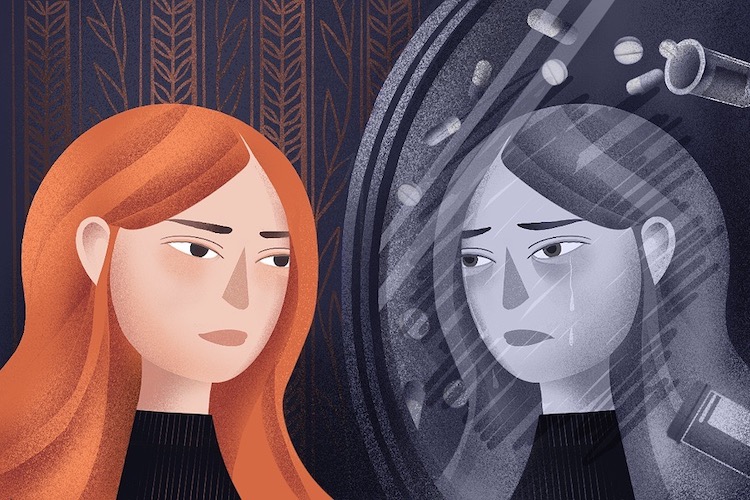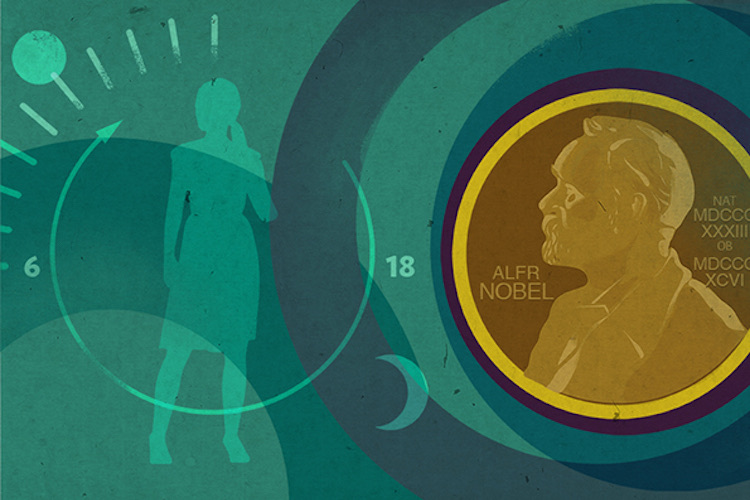Circadian Rhythm
Neuroscientist Russel Foster on the sleep-wake cycle, photosensitive retinal ganglion cells, and SCRD
faq | October 17, 2016
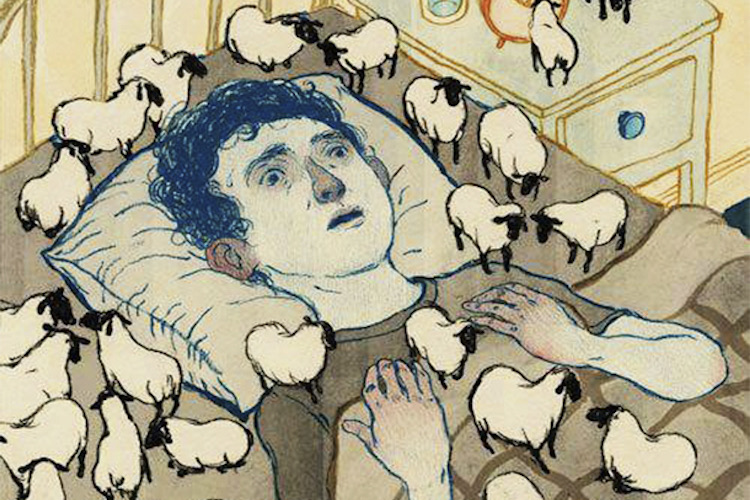
Circadian rhythm (CR) is an endogenous biological rhythm with a period of about 24 hours. CRs are generated within an organism to fine-tune all aspects of physiology and behavior to the varying demands of the 24-hour world. CRs anticipate daily changes in light and dark, temperature, food availability, and even predation and prepare the organism in advance for a changing world so that it is fully adapted. CRs are found in almost all life forms on the planet, including bacteria. In humans, the most obvious circadian rhythm is our sleep/wake cycle.
Clockwork Cells
Circadian rhythms (CRs) seem to be a property of almost all life forms, including unicellular life and bacteria. At a molecular level, there is a circadian clock that drives a nearly 24-hour internal oscillation that adjusts the internal physiological rhythm to the external 24-hour cycle. We know what makes those internal clocks tick. There are a number of key clock genes which produce clock proteins. These genes and proteins interact to produce a molecular feedback loop that generates a near 24-hour oscillation in clock proteins. These rhythmic proteins then signal to the cell the time of day and what to do when. The CR does not, as we had originally thought, arise from lots of different cells working as a network, but rather it is the property of an individual cell.
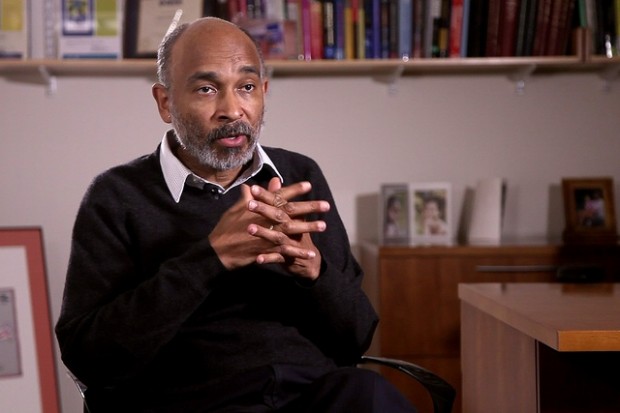
In complex multicellular life forms, there is often a central or “master” clock that coordinates all other clock cells. In mammals, the master clock resides within the brain and is called the suprachiasmatic nuclei (SCN). It receives light information from the eyes to entrain the 50,000 neurons within the SCN, and these then send out multiple signals to coordinate the rest of the body. The individual clock cells of the SCN use more than 14 different genes and their protein products to generate a circadian rhythm.
Key Properties of CR
A circadian rhythm is a special type of biological rhythm. A biological rhythm is a broad term for any rhythmic process. Some rhythms are generated by clocks whilst others are driven by the environment. A biological clock-generated rhythm will continue under constant conditions of light and temperature. In addition to 24-hour circadian rhythms, there are clocks that tick with a period of a year or 360-days and are called circannual rhythms, or tidal clocks, found in organisms living on the seashore who have biological clocks with a period of approximately 12.8 hours.

Engraving of De Mairan by Simon Charles Miger
We have known about the 24-hour rhythms for a very long time. The ancient Greeks talked about daily changes but thought they were just driven by changes in light and temperature in the external world. The first proper experiment on circadian rhythms was done in 1729 by a French scientist and astronomer called Jean-Jacques d’Ortous De Mairan. He put a plant in a cupboard and noticed that in constant darkness, the leaves of the plant would open and close in a nearly 24-hour rhythm. This observation was the first recorded indication that these rhythms might be driven from within. There weren’t very many experiments after this until the 1950s and 1960s when the real properties of CRs were discovered.
The first property that defines a circadian rhythm is that it continues under constant conditions of light or dark. The rhythm will oscillate, but depending on the species, the period may be a bit longer or shorter than 24 hours. In humans, the clock is a bit longer than 24 hours, whilst, in mice, it is a bit shorter. The second key property is that these rhythms are temperature compensated. This means that the 24-hour rhythm does not speed up or slow down very much, even when the external temperature might change greatly. That is an important property because if the clock wasn’t temperature compensated, then the circadian clock would be incapable of telling time. The third key feature is that CRs can be locked onto the external 24-hour day. Mainly the signal is light, although there are other signals, such as temperature.
Some organisms can set their clocks based on the clock-driven behavior of other animals. For example, mouse pups begin to set their rhythms before and after they have been born using hormonal signals from their mother. In the uterus, the signals arrive in the blood via the placenta and, after birth, in the milk. Later when the eye/SCN projections have formed, they can use light. We are not really sure if this also happens in humans. Malarial parasites can detect the time of day from signals in our blood, and this triggers them to move to the blood vessels very close to the skin at night, where mosquitoes bite and so pick up the parasites. The mosquito will then bite another person and infect another victim.
Importance of Routine
The key advantage of having a clock is that it allows an organism to anticipate predictable changes in the environment and fine-tune physiology and behavior in advance of those changing conditions. For example, if you know that dawn will be in three hours’ time, you can start to increase your metabolic rate, increase core-body temperature, increase muscle strength, increase blood flow and prepare for activity. All of these prepare you to be active when the morning comes, to get out there and fully exploit the new environment. If we simply waited for morning to arrive, we would waste lots of time adjusting to the new environment and not being fully able to exploit the “new” conditions. And in the same way, at the end of the day, when we start to go to sleep, body physiology begins to be reduced and turned down, preparing the brain and the rest of the body for sleep. During sleep, the brain is very busy establishing memories, processing information to come up with new solutions to complex problems, instructing the rest of the body to repair damaged tissues, rebuild metabolic pathways, and organize energy reserves. Some parts of the brain is more active during sleep than wake. So although we are not moving, the brain is incredibly active performing essential activities needed for the next day of activity. The ability to predict and anticipate, rather than merely respond, allows an organism a huge selective advantage in the struggle for existence.
A circadian clock can also be used by some animals and plants to detect the seasons. If an organism can measure the daily changes in the amount of dark and light, and if the duration of darkness is increasing or decreasing, then it can determine the time of year very accurately. The increasing night length in the autumn in the northern hemisphere can be used to signal to some mammals to prepare for hibernation, or in other animals, such as deer and sheep, it can trigger the urge to mate. Mating in the autumn means that young will develop over winter and arrive in the spring when their weather is usually good and there is lots of new plant growth to feed upon. Some mammals also change the thickness and color of their fur to prepare for winter. For example, Arctic foxes produce thicker whiter fur to help them survive and for camouflage. Humans also show some seasonal biology. It is not very obvious in most of us, but changes in appetite and weight gain are often reported, and some people show more depressive behaviors in the winter months. How these changes are driven remains unclear. It is also likely that in the past, we were more seasonal than we are now. Partly because now we are protected from the external world by living inside, and the earth’s seasonal rhythms are no longer as sharply defined.
How to Set the Clock
A big question has been how the eye detects light for the entrainment of circadian rhythms. A recent discovery by our team has been that the eye contains a special set of light-sensitive cells called “photosensitive retinal ganglion cells” or pRGCs. These pRGCs are quite different from the rods and cones that detect light or build an image of our world. They are formed from the “ganglion cells” whose projections leave the eye and enter the brain as the optic nerve. About 1-2% of the ganglion cells possess a blue light-sensitive photopigment called “OPN4”.The pRGCs detect dawn and dusk and then set the molecular clockwork to the correct time of day.
A further key discovery has been that some people can have damaged rods and cones because of genetic diseases and may be visually blind but have perfectly normal and functional pRGCs. So these people are visually blind but not clock blind. This has important implications in the clinic, and eye doctors need to advise their visually blind patients with intact pRGCs to seek out sufficient light to entrain their circadian rhythms. Ophthalmologists now appreciate that the eye is an organ that provides us with both our sense of space (vision) and time (circadian regulation). Such an understanding has redefined our definition of blindness and the treatment of eye disease.It is important to stress that if you have no eyes, then all light entrainment is lost. Some people have claimed in the past that we have photoreceptors in the brain and even behind the knee. But such claims have never been supported by scientific study. Without eyes, most of us will get up and go to bed about 30 min later each day as our internal clock is about 24.5, and not exactly 24 hours. There are tragic cases where individuals are born without eyes or have lost them as a result of an accident. Work is now underway to provide a “pharmacological replacement” for light. Basically, a pill that fools the molecular clockwork that it has seen the light, and this will bring about entrainment.
In addition to having no eyes, there is another problem concerning light: we are not getting enough of it at the right time. Most of the time, we remain inside, and the light is not strong enough to set the clock. This is a particularly serious problem for the elderly, either at home and inside or in a nursing home. However, when the levels of light are increased inside, stable circadian rhythms and sleep/wake patterns can be restored, and with restored sleep, brain function in these individuals improves. In humans, eating at the same time of day and even morning exercise have also been shown to help maintain a good sleep pattern.

Sun, Flickr//Sergey Ivanov
Circadian Rhythms and Sleep
In the developed and increasingly, developing world as well, help is badly needed to repair our sleeping patterns in what is now a 24/7 society. Our 24-hour rhythm of sleep is the most obvious diurnal rhythm exhibited by humans and many other animals, but there is more to sleep than the circadian system. Sleep is a highly complex state generated by multiple brain regions, neurotransmitter systems, and modulatory hormones. This complexity makes sleep very vulnerable to disruption. Indeed, recent work has shown that sleep and circadian rhythm disruption (SCRD) is common in both neurodegenerative and neuropsychiatric illnesses where neurotransmitter pathways are disrupted. For example, SCRD is reported in more than 80% of patients with either depression or schizophrenia. But the inconvenience of feeling sleepy at inappropriate times is just the tip of the iceberg. SCRD is also associated with a broad range of interconnected pathologies, including poor vigilance and memory, reduced mental and physical reaction times, reduced motivation, depression, insomnia, metabolic abnormalities, obesity, immune impairment, and an even greater risk of cancer. All of these are frequently reported in both mental illness and neurodegenerative disease.
The recent advances in our understanding of the brain mechanisms that generate and regulate circadian rhythms and sleep, and a growing appreciation of the broad health problems associated with SCRD, represent a truly remarkable opportunity to promote an understanding of sleep across society. Sleep is truly the best medicine, and working at the wrong time can be disastrous – literally. Our alertness reaches its low point in the early hours of the morning, and it is no coincidence that accidents such as Chernobyl and the Exxon Valdez occurred on the night shift. Even allowing for fatigue and traffic volume, there is a disproportionally far higher incidence of car accidents at about 4.00 am than at other times of the day. And if we can’t help everybody with increased awareness and prioritization of sleep, then an understanding of the mechanisms and pathways that generate and regulate sleep is allowing the development of novel evidence-based treatments and drugs that will transform the health and quality of life of many individuals across a broad spectrum of society and illness. The potential impact of helping individuals resolve their sleep problems is enormous and within our grasp. What needs to change is that, at the moment, in most five-year medical degrees the subject of sleep and circadian rhythms is only considered in one or two lectures.
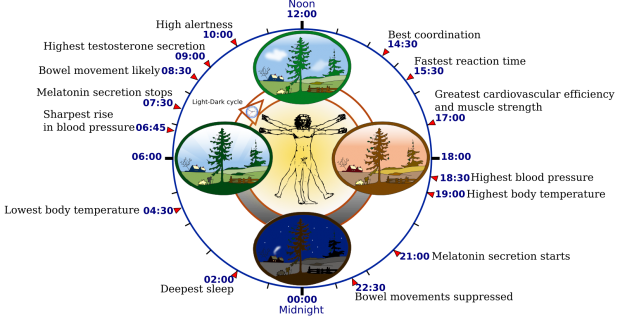
The 24-hour Human Biological Clock //Wikipedia
Edited by Irina Laevskaya













